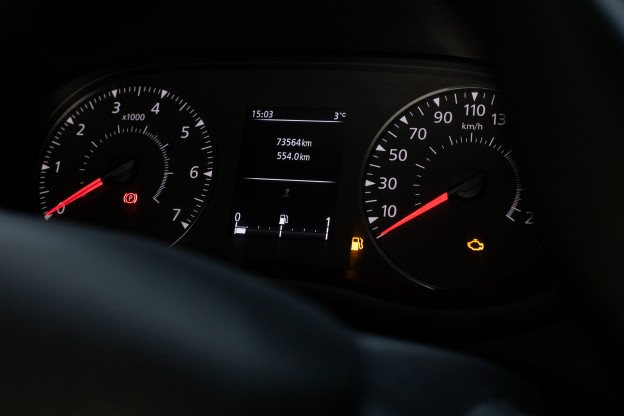Tire pressure may seem like a minor detail, but it plays a significant role in your vehicle’s performance and safety. The Tire Pressure Monitoring System (TPMS) works behind the scenes to ensure your tires stay properly inflated, which reduces the chances of blowouts, improves fuel efficiency, and helps your car handle better on the road. Some drivers may not think much about TPMS until the warning light appears, but understanding this system helps you make smarter maintenance choices and avoid roadside issues. This article provides a complete guide on TPMS, including how it works, what to do when alerts appear, and how to maintain the system properly.
What Does TPMS Mean?
TPMS stands for Tire Pressure Monitoring System. It refers to an onboard technology found in most modern vehicles that continuously monitors the air pressure inside the tires. When your tire pressure drops below or rises above the recommended level, the TPMS activates a warning light on your dashboard.
There are two types of TPMS: direct and indirect. Both serve the same purpose—informing you when your tire pressure is off—but they operate differently. Understanding the difference helps drivers identify issues and take the right steps to fix them.
How Does TPMS Work?
A TPMS uses sensors to track tire pressure in real time. In a direct TPMS, each tire has its own pressure sensor located inside the wheel. These sensors send data to your vehicle’s computer system. If a tire falls below the threshold—usually 25% under the recommended pressure—the system alerts you.
Indirect TPMS, on the other hand, does not measure pressure directly. It uses the wheel speed sensors from the anti-lock braking system (ABS) to estimate tire pressure. When one tire rotates faster than the others (as a deflated tire would), the system detects the change and triggers a warning.
TPMS Warning Light: What It Means and How to Respond
The TPMS warning light typically looks like a horseshoe with an exclamation point in the middle. When this symbol appears on your dashboard, it means at least one tire may be underinflated or overinflated. The warning can appear due to:
- Sudden temperature changes
- A punctured tire
- Leaks in the valve stem
- Sensor malfunction
If the light comes on while you’re driving, it’s best to pull over safely and check your tires. Use a tire pressure gauge to compare each tire’s pressure against the manufacturer’s recommended levels (usually found on a sticker inside the driver’s door). Inflate or deflate as needed. If you notice a flat or visibly damaged tire, seek roadside assistance or replace the tire right away.
For more information on choosing the perfect tires for your vehicle, check out our New Tire Buying Guide: Everything You Need to Know.
TPMS Sensor Alerts and Maintenance
Like all parts of your vehicle, TPMS sensors need occasional maintenance. These sensors are powered by internal batteries that typically last between 5 to 10 years. When a battery runs out or a sensor fails, your vehicle will usually alert you with a flashing TPMS light or a specific sensor error message.
To keep the system working properly, it’s important to check your tire pressure regularly—both manually and using the TPMS readout. Damaged or aging sensors should be replaced promptly, and anytime you change tires or rims, you should confirm that the new setup is compatible with your TPMS. It’s also a good idea to inspect the valve stems during tire service, as they’re part of the sensor unit in many systems.
If you’re installing new tires or wheels, be sure the shop either transfers your existing sensors or recalibrates the system correctly. Ignoring sensor alerts can lead to false readings or total failure of the TPMS, which can compromise both performance and safety.
TPMS Reset Guide
After inflating your tires to the correct pressure, the TPMS light may stay on. This usually means the system needs a reset. The reset process varies depending on the make and model of your vehicle. Here are general steps:
- Turn your ignition to the “on” position without starting the car.
- Press and hold the TPMS reset button (often located beneath the steering wheel) until the light blinks several times.
- Drive the vehicle for 10–30 minutes at 30 mph (ca. 48 km/h) or more to allow the system to recalibrate.
Check your owner’s manual for your vehicle’s specific reset instructions. If the reset doesn’t work, the issue may involve a faulty sensor or damaged wiring, requiring professional inspection.
Tire Pressure System Malfunction: Troubleshooting Tips
Sometimes, your dashboard may show a TPMS malfunction warning rather than a simple low-pressure alert. This means the system itself has stopped working correctly. Common causes include:
- Dead sensor batteries
- Damaged sensors during tire changes
- Signal interference
- Issues in the TPMS control module
If your TPMS warning light stays on, start by manually checking all four tires with a pressure gauge to rule out under- or overinflation. Sometimes, the issue isn’t the tire but the sensor. Inspect each TPMS sensor for damage or loose placement, especially after a tire change. If the light still won’t turn off, a technician can run a diagnostic to find and fix the problem. Don’t ignore the alert—driving with a malfunctioning system can lead to poor fuel economy, tire wear, or even a blowout.
Keep Your Tires—and Your Safety—In Check with TPMS Service in Richmond Hill
In places like Richmond Hill, where temperature shifts are frequent and road conditions vary, tire pressure fluctuates more than you might expect. A functioning TPMS helps you maintain safety, performance, and fuel efficiency through every season.
If you’re due for a tire inspection or service, visit our Tire Service Page to ensure your vehicle stays in top condition.
If your TPMS light stays on, sensors need replacing, or your system needs recalibration, professional TPMS service is available in Richmond Hill. Certified technicians can diagnose your system, repair or replace faulty components, and ensure you’re driving with full confidence.
What Does the TPMS Warning Light Look Like?
The most common TPMS warning light resembles a flat tire with an exclamation mark—like a horseshoe or bowl shape with a “!” in the center. Some vehicles also display messages like “Check Tire Pressure” or show pressure values on a digital screen.
How Often Should I Check My Tire Pressure?
Even with a TPMS, manual tire checks are recommended at least once a month and before long trips. TPMS sensors alert you to serious drops, but they may not catch gradual or borderline pressure changes that still affect performance.
Can I Replace TPMS Sensors Myself?
Yes, but it’s best left to experienced hands. TPMS sensors are delicate and require proper installation tools. Improper handling can damage the sensor or lead to leaks. If you’re not familiar with tire and wheel servicing, it’s safer to let a technician handle it.


Pingback: viagra 50 mg coupon